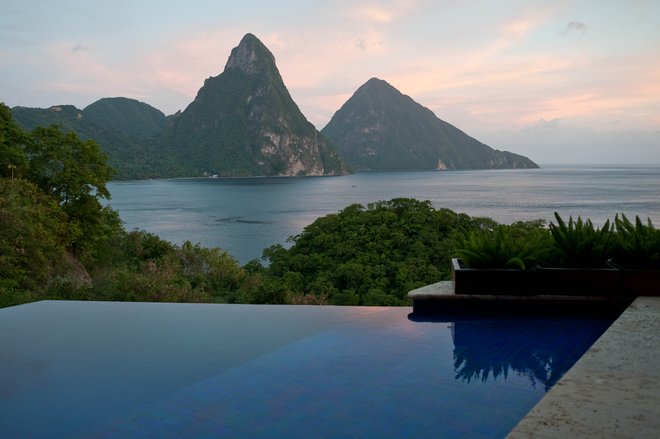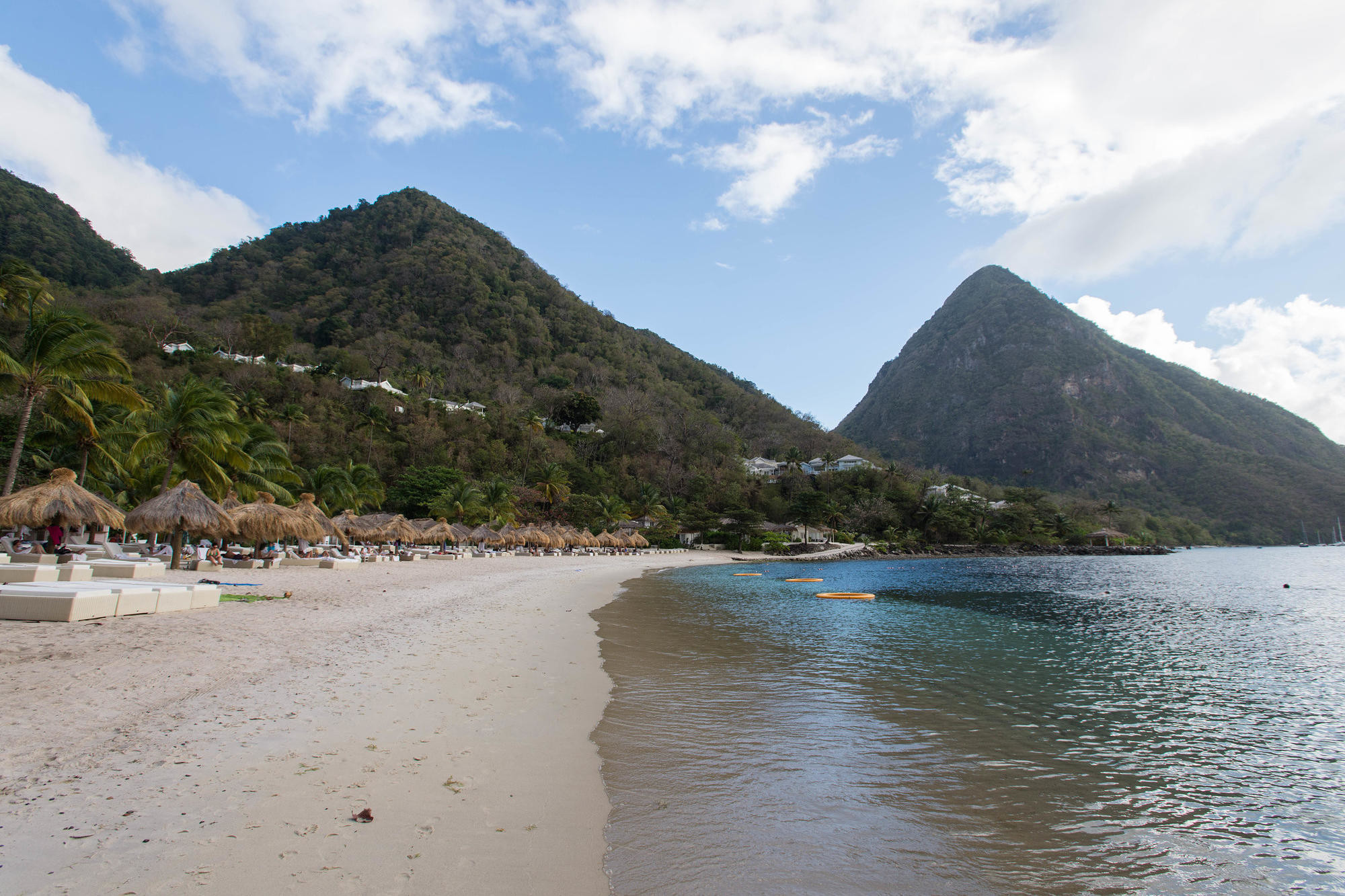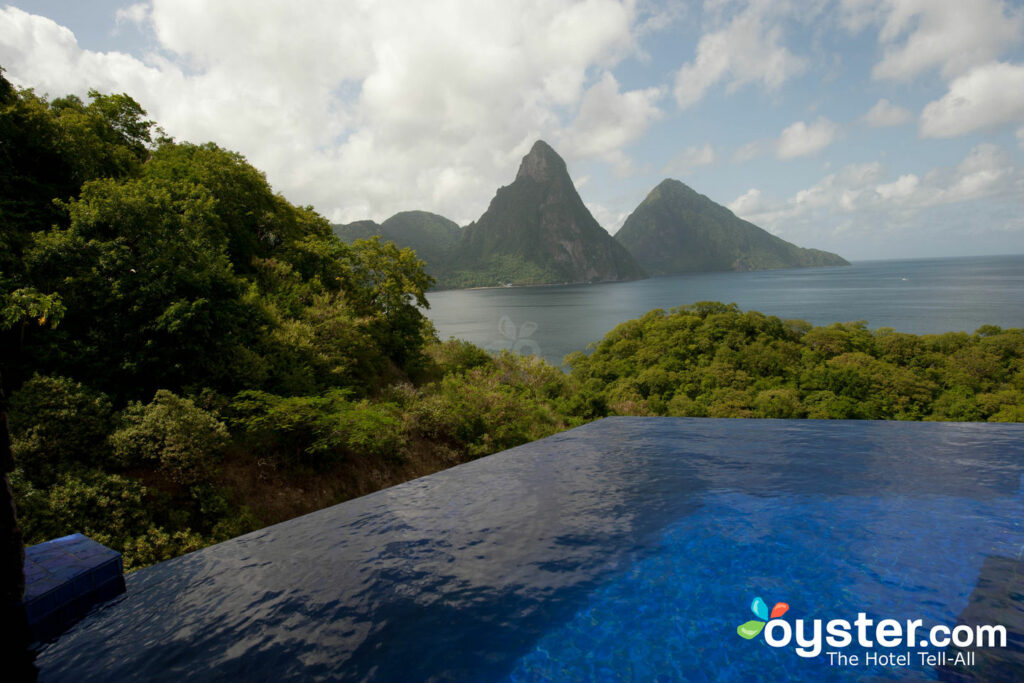
Instantly recognizable for its towering Pitons, St. Lucia is a Caribbean island paradise that combines rugged volcanic mountains, tropical rainforest, and sandy beaches. It strikes a balance between a developed, tourist-friendly island and a rustic destination full of local charm and unspoiled natural landscape, making it the perfect getaway for honeymooners and dive tourists alike. From the bustling, party-loving north to the laid-back serenity of the nature-heavy south, the island is packed with waterfalls, sandy stretches of beach, fresh seafood, and the list goes on. Here are 12 more things to know before you pack your bags for St. Lucia.
1. Tipping is discretionary.
St. Lucia doesn’t share quite the same tipping culture as the U.S. Most restaurants and bars will add 10 percent for service to the bill — anything additional is up to you. That said, St. Lucia is an island that relies heavily on tourism, so feel free to tip to your heart’s content if you feel you’ve received exceptional service from your taxi driver, tour guide, or bartender.
2. The beaches are all public.
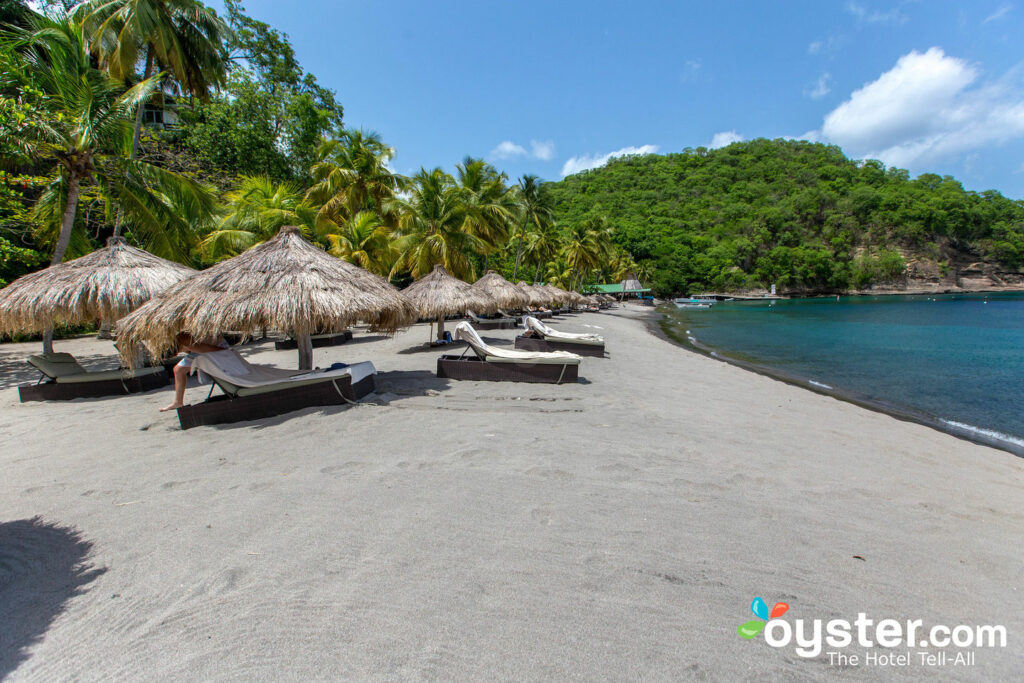
Unlike some islands in the Caribbean, St. Lucia’s beaches are all open to the public. So, while there are plenty of beachside resorts, they don’t have exclusive access to the shore, meaning you’ll never have to face that terrible realization that the dreamy beach you’ve spotted is for resort guests only. That said, some resorts might restrict non-guests from using their sun loungers and beach bars.
3. You can use U.S. dollars.
St. Lucia has its own currency, the Eastern Caribbean dollar, but that doesn’t mean you need to convert an obscene amount of cash before you arrive. Most places accept U.S. dollars, though you might be given change in Eastern Caribbean dollars. Tip: Always carry some cash because the option to pay by card isn’t always available.
4. Don’t expect to find the quintessential white-sand Caribbean beach.
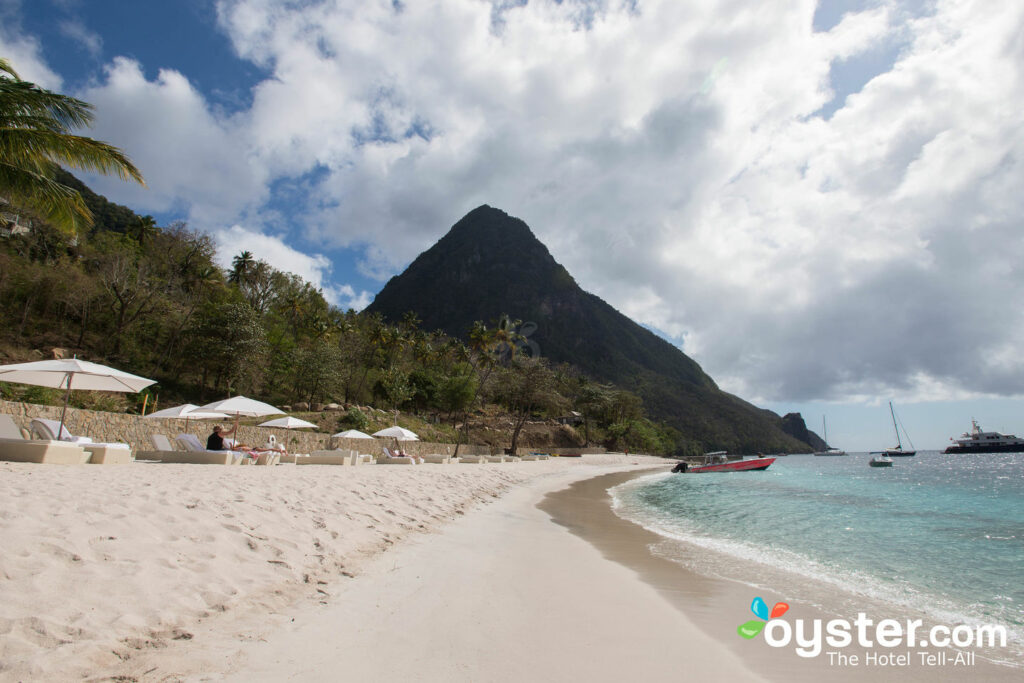
When it comes to beaches, St Lucia is an anomaly. Yes, they’re beautiful and the water is clean and inviting, but don’t expect to see bright white sand. Being a huge mass of volcanic action, the sand in St. Lucia is a mix of orange and striking black, with only a few rare exceptions. However, if you’re desperate for a white-sand beach, head to Anse des Pitons. The man-made beach features pristine sand that is regularly imported.
5. Friday night is street party night.
Plenty of Caribbean islands host weekly street limes (parties), and St. Lucia is no different. Every Friday night, locals and tourists come together to dance, drink strong rum punch and ice-cold beer, and feast on fresh barbecued fish, crab, and lobster. Small, laid-back events are hosted around the island, but the main party is the Gros Islet Jump Up. The street party in the small town of Gros Islet features Caribbean music, beer, lobster and top-notch people-watching.
6. St. Lucia offers more than just beaches.
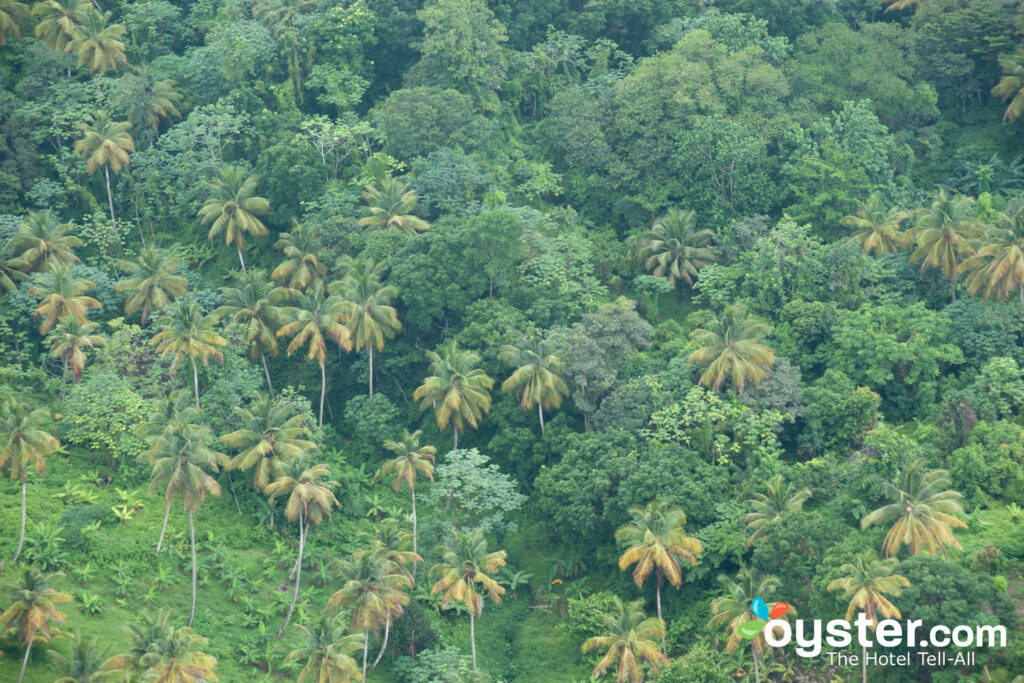
Sure, beaches are great, but St. Lucia is also home to a lush, tropical landscape worth exploring. There’s the 19,000-acre National Rain Forest, the Diamond Botanical Gardens, numerous waterfalls (including the amazing Sault Falls on the east side of the island), Sulphur Springs (complete with mud baths), and the Pitons — which you can hike up. Oh, and don’t miss a trip to a local market. Castries isn’t the greatest place to visit, but its bustling market is worth making an exception for.
7. Beach vendors and guides can be pushy.
When it comes to beach vendors and local tour guides, tourists can find themselves in a conundrum. On one hand, arranging boat tours or trips to the waterfalls and rainforest with a local not attached to your resort can save you a lot of money. On the other hand, with so many people vying for your time, things can get pushy. Vendors peddling buckets of beer, water sports activities, and sun loungers are likely to pester you, especially on Reduit Beach, so be prepared to be firm. Either that, or head to a quieter beach like Pigeon Island.
8. Hiking Pigeon Island is a must.
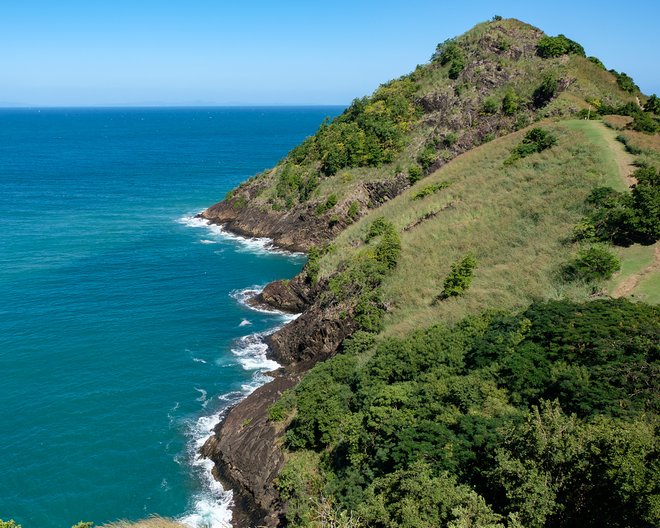
Not an island at all, Pigeon Island is in fact a national park located in the northern part of St. Lucia and offers beautiful trails. Among the lush tropical forest, the remains of old military buildings — half covered in vegetation — crop up in unlikely spots. You can opt to hike alone or enlist in one of the many local tours that explore the area. Once you’ve conquered the trail — including climbing to the top of Fort Rodney where you’ll be rewarded with panoramic views of the island — spend some time winding down on nearby Pigeon Island Beach.
9. The wildlife is amazing, but stray animals roam free.
While St. Lucia’s reef attracts an array of sea life, the island itself can more than match what’s going on below the surface of the waves. Visitors can expect to see hummingbirds, turtles (depending on the season), fireflies, iguanas, and a variety of bird species such as warblers and parrots. However, there are also a number of stray cats and dogs that roam the island, which might turn off some visitors. While charity groups are doing their best to find homes for some of these animals, the long-term problem of strays is one that the island has no real answer to.
10. Anse De Pitons and Anse Chastanet cater to all types of snorkeling.
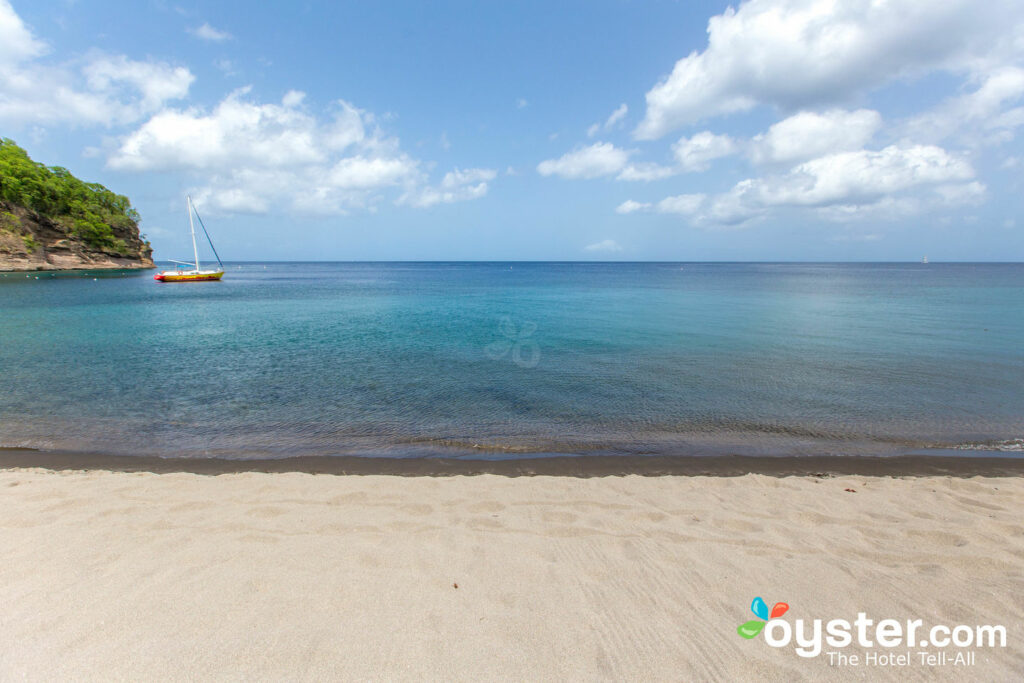
Anse de Pitons offers travelers the chance to snorkel at the foot of St. Lucia’s Pitons. The sea life here is stunning, but note that since it’s situated the foot of the mountain, the water depth jumps off and drops deep. If you want a gentler experience closer to the shore, Anse Chastanet is the better bet. Anse Chastanet is one of the island’s top snorkel spots, thanks to its proximity to a designated nature reserve roped off from boats.
11. Don’t be afraid to rent a car.
If you can handle a stick shift (most rentals aren’t automatic), a steering wheel on the right, and driving on the left-hand side of the road, then rent a car. While a lot of hotels run shuttle buses to beaches and attractions, hiring a car offers you the freedom to explore on your own schedule. St. Lucia is mountainous, so expect some steep ups and downs and plenty of winding corners. That said, there is only one main road on the island, so it’s difficult to get lost. Bear in mind that rental cars can be identified through their license plates, so think twice before leaving valuables in the car, especially if you park up somewhere quiet.
12. Beware of hurricane season.
St. Lucia is located in the hurricane belt, which means travelers might want to be picky about when they visit. Generally, the strongest storms coincide with the rainy season, which runs from June to November. While the temperatures are still warm during the off-season period, and prices are lower, you’ll want to decide whether you want to risk the wind and rain.
Some of Our Favorite Hotels in St. Lucia
Jade Mountain Resort
Jade Mountain is one of the most romantic resorts not only in the Caribbean, but the world, thanks to its incredible Piton views and extraordinary design. The 29 enormous suites, called “sanctuaries,” are hands-down the highlight; through the innovative, open fourth wall, each has a view of a sea from the entire room — from the canopied bed, raised whirlpool tub, and (in all but the entry-level category) private infinity pool.
Sugar Beach, A Viceroy Resort
This luxurious Viceroy is truly a stunner. It has arguably the best location on St. Lucia, right in between the Pitons, St. Lucia’s famous volcanic spires, and on a beautiful white-sand beach. Its 79 rooms are minimalistic, chic, and mostly white, and all come with private plunge pools, butlers, and 24-hour room service; the larger villas and cottages offer living rooms and huge bathrooms (some with outdoor showers and hot tubs).
What You Need to Bring to St. Lucia: Mama Kuleana Reef Safe Sunscreen
As a skin safe AND reef safe sunblock option featuring only pronounceable ingredients, with Mama Kuleana you’re not only helping yourself, but the environment as well.
You’ll Also Like:
- 8 of the Best Beaches in St. Lucia
- Best Beach Hotels in St. Lucia
- Best All-Inclusive Resorts in St. Lucia
All products are independently selected by our writers and editors. If you buy something through our links, Oyster may earn an affiliate commission.
